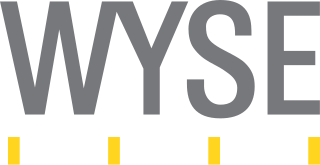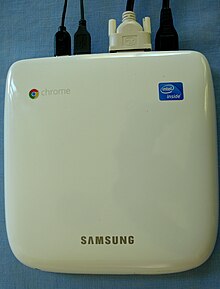
The X Window System is a windowing system for bitmap displays, common on Unix-like operating systems.

A terminal emulator, or terminal application, is a computer program that emulates a video terminal within some other display architecture. Though typically synonymous with a shell or text terminal, the term terminal covers all remote terminals, including graphical interfaces. A terminal emulator inside a graphical user interface is often called a terminal window.

In computing, a windowing system is a software suite that manages separately different parts of display screens. It is a type of graphical user interface (GUI) which implements the WIMP paradigm for a user interface.
In computer networking, a rich client is a computer that typically provides rich functionality independent of the central server. This kind of computer was originally known as just a "client" or "thick client," in contrast with "thin client", which describes a computer heavily dependent on a server's applications. A rich client may be described as having a rich user interaction.

Citrix Systems, Inc. is an American multinational cloud computing and virtualization technology company that provides server, application and desktop virtualization, networking, software as a service (SaaS), and cloud computing technologies. Citrix claims that their products are used by over 400,000 clients worldwide, including 99% of the Fortune 100 and 98% of the Fortune 500.
Linux Terminal Server Project (LTSP) is a free and open-source terminal server for Linux that allows many people to simultaneously use the same computer. Applications run on the server with a terminal known as a thin client handling input and output. Generally, terminals are low-powered, lack a hard disk and are quieter and more reliable than desktop computers because they do not have any moving parts.

A diskless node is a workstation or personal computer without disk drives, which employs network booting to load its operating system from a server.

A multiseat, multi-station or multiterminal system is a single computer which supports multiple independent local users at the same time.
Centralized computing is computing done at a central location, using terminals that are attached to a central computer. The computer itself may control all the peripherals directly, or they may be attached via a terminal server. Alternatively, if the terminals have the capability, they may be able to connect to the central computer over the network. The terminals may be text terminals or thin clients, for example.
Application virtualization is a software technology that encapsulates computer programs from the underlying operating system on which they are executed. A fully virtualized application is not installed in the traditional sense, although it is still executed as if it were. The application behaves at runtime like it is directly interfacing with the original operating system and all the resources managed by it, but can be isolated or sandboxed to varying degrees.
Desktop virtualization is a software technology that separates the desktop environment and associated application software from the physical client device that is used to access it.
In computing, the term remote desktop refers to a software- or operating system feature that allows a personal computer's desktop environment to be run remotely from one system, while being displayed on a separate client device. Remote desktop applications have varying features. Some allow attaching to an existing user's session and "remote controlling", either displaying the remote control session or blanking the screen. Taking over a desktop remotely is a form of remote administration.
Remote Desktop Services (RDS), known as Terminal Services in Windows Server 2008 and earlier, is one of the components of Microsoft Windows that allow a user to initiate and control an interactive session on a remote computer or virtual machine over a network connection. RDS was first released in 1998 as Terminal Server in Windows NT 4.0 Terminal Server Edition, a stand-alone edition of Windows NT 4.0 Server that allowed users to log in remotely. Starting with Windows 2000, it was integrated under the name of Terminal Services as an optional component in the server editions of the Windows NT family of operating systems, receiving updates and improvements with each version of Windows. Terminal Services were then renamed to Remote Desktop Services with Windows Server 2008 R2 in 2009.

Pano Logic was a manufacturer of devices which present virtual desktops to the end user with no local processing power. They describe this concept as "zero client". This is perceived as offering benefits in end-user support and in power provision to desks. OEM versions have been included in displays from some vendors, allowing a single unit to be deployed. The company failed in October 2012. In March 2013, Propalms announced they had acquired the rights to support Panologic customers, and will "help transition the customer base to a new platform".
User environment management is the management of a computer user's experience within their desktop environment.
In computing, virtualization or virtualisation in British English is the act of creating a virtual version of something at the same abstraction level, including virtual computer hardware platforms, storage devices, and computer network resources.
A hosted desktop is a product set within the larger cloud-computing sphere generally delivered using a combination of technologies including hardware virtualization and some form of remote connection software, Citrix XenApp or Microsoft Remote Desktop Services being two of the most common. Processing takes place within the provider's datacenter environment with traffic between the datacenter and the client being primarily display updates, mouse movements and keyboard activity.
Wanova, Inc, headquartered in San Jose, California, provides software allowing IT organizations to manage, support and protect data on desktop and laptop computers. Wanova's primary product, Wanova Mirage, was designed as an alternative to server-hosted desktop virtualization technologies.

Wyse Technology, Inc., or simply Wyse, was an independent American manufacturer of cloud computing systems. As of 2012, Wyse is a subsidiary of Dell. Wyse are best remembered for their video terminal line introduced in the 1980s, which competed with the market-leading Digital. They also had a successful line of IBM PC compatible workstations in the mid-to-late 1980s. But starting late in the decade, Wyse were outcompeted by companies such as eventual parent Dell. Current products include thin client hardware and software as well as desktop virtualization solutions. Other products include cloud software-supporting desktop computers, laptops, and mobile devices. Dell Cloud Client Computing is partnered with IT vendors such as Citrix, IBM, Microsoft, and VMware.
Citrix Virtual Apps is an application virtualization software produced by Citrix Systems that allows Windows applications to be accessed via individual devices from a shared server or cloud system.












